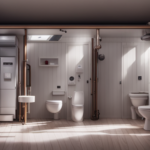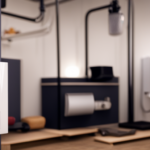Beginners Guides
How Many Access Does A Tiny House Use
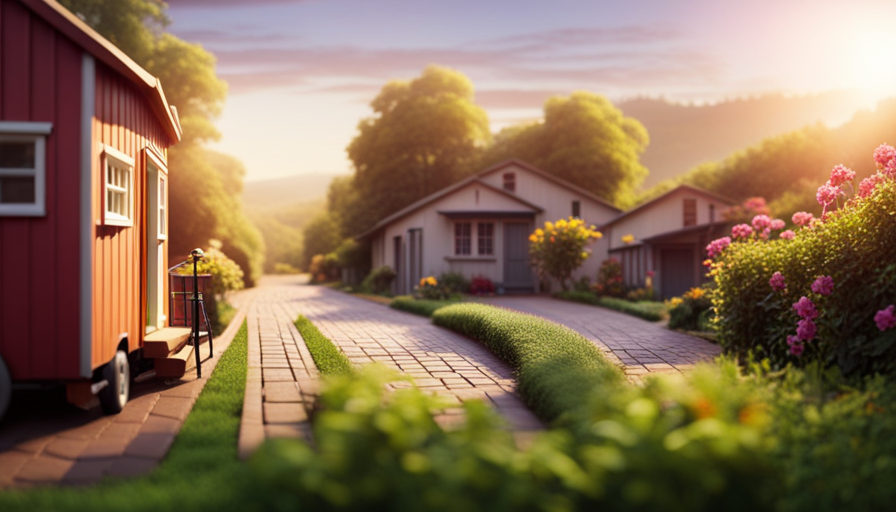
Envision residing in a snug, small abode that isn’t just eco-conscious but also encourages a simpler, minimalist way of living. Enter the realm of tiny houses! These compact homes have become increasingly popular lately due to their cost-effectiveness and adaptability.
But how do these pint-sized homes handle the essential utilities we rely on every day? In this article, I will explore the various access points required by tiny houses to function efficiently.
Let’s start with water supply and plumbing. Despite their size, tiny houses need running water just like any other home. From showers and sinks to toilets and washing machines, it’s crucial to have a reliable water source and proper plumbing system in place.
Next up is electricity and power sources. Although they consume significantly less energy compared to traditional homes, tiny houses still require access to electricity for lighting, appliances, and charging devices. Exploring alternative power options such as solar panels or wind turbines can greatly reduce reliance on the grid.
As we delve deeper into the world of tiny house living, we’ll also discuss heating and cooling solutions, waste management systems, internet connectivity options, kitchen appliances for cooking delicious meals, laundry facilities for keeping our clothes clean, efficient storage solutions for maximizing space utilization, as well as necessary maintenance and repairs.
Join me on this informative journey as we discover how these remarkable abodes manage all their essential needs within their limited square footage. Whether you’re considering downsizing or simply curious about the inner workings of these petite dwellings – this article will provide valuable insights into how many access points are needed in order for tiny house living to be both comfortable and sustainable.
Key Takeaways
- Tiny houses require access to water supply and plumbing.
- Tiny houses use rainwater harvesting to reduce reliance on municipal water supply.
- Tiny houses utilize low-flow fixtures and composting toilets to minimize water consumption.
- Tiny houses use renewable energy sources like solar panels, wind turbines, and hydroelectric systems for electricity.
Water Supply and Plumbing
Did you know that a tiny house uses significantly less water than a traditional home? Water conservation is a key aspect of living in a tiny house, as it promotes sustainability and reduces environmental impact.
With limited space, every drop counts, and tiny homeowners are conscious of their water usage. One way they achieve this is through rainwater harvesting. By collecting rainwater from the roof into storage tanks, they can use it for various purposes like flushing toilets, watering plants, and even bathing. This practice not only reduces reliance on municipal water supply but also decreases water bills.
In addition to rainwater harvesting, tiny houses utilize other smart plumbing techniques to minimize water consumption. Low-flow fixtures such as showerheads and faucets help reduce water flow without compromising functionality. Composting toilets are another popular choice among tiny homeowners as they require no water for flushing or sewage treatment.
Transitioning to the next section about electricity and power sources, it’s important to note that just like with water usage, tiny houses focus on energy efficiency and sustainable practices.
Electricity and Power Sources
When it comes to generating electricity in a tiny house, there are several options available. Solar panels are a popular choice among tiny house owners, as they provide a renewable and sustainable source of power.
Additionally, other renewable energy sources such as wind turbines or hydroelectric systems can also be utilized to generate electricity for a tiny house.
Options for generating electricity in tiny houses
One popular option for generating electricity in tiny houses is to install solar panels. Solar panels harness the power of the sun to generate electricity, making them a sustainable and environmentally-friendly choice. They are especially beneficial for those interested in off-grid living or water conservation. By relying on solar energy, homeowners can reduce their dependence on traditional energy sources and decrease their carbon footprint.
Additionally, solar panels provide a reliable source of electricity even in remote locations where access to the grid may be limited. In combination with other renewable energy sources such as wind turbines or hydroelectric systems, tiny house owners can create a self-sustaining power system that meets their energy needs. This transition into using solar panels and other renewable energy sources allows for a more independent and eco-friendly lifestyle while minimizing reliance on external resources.
Solar panels and other renewable energy sources
If you’re looking to go off-grid and reduce your carbon footprint, installing solar panels and incorporating other renewable energy sources is a great way to achieve that. Solar panel installation for tiny houses has become increasingly popular due to its numerous benefits. Not only does it provide a clean and sustainable source of electricity, but it also helps in reducing utility bills. Additionally, solar panels require minimal maintenance and have a long lifespan, making them a cost-effective choice in the long run.
To further illustrate the benefits of renewable energy sources in tiny houses, consider the following table:
| Benefits of Renewable Energy Sources | ||
|---|---|---|
| Clean & Sustainable | Reduce Utility Bills | Low Maintenance |
| Long Lifespan | Environmentally Friendly | Reliable Power Supply |
By harnessing the power of solar panels and other renewable energy sources, tiny house owners can enjoy reliable electricity while minimizing their impact on the environment. Transitioning into the subsequent section about heating and cooling, it’s important to explore efficient systems that complement these eco-friendly energy solutions.
Heating and Cooling
When it comes to heating options for tiny houses, there are a few key factors to consider. One option is a wood stove, which can provide both warmth and ambiance.
Another option is a mini-split heat pump, which offers efficient heating and cooling capabilities.
Lastly, electric radiant floor heating can be a great choice for keeping your tiny house cozy in colder climates.
For those living in hot climates, finding effective cooling solutions for tiny houses is essential. One option is a portable air conditioner, which can be easily moved from room to room as needed.
Another solution is installing ceiling fans or window fans to promote airflow throughout the space.
Additionally, using reflective window film or shades can help block out the sun’s heat and keep your tiny house cool during the summer months.
Overall, choosing the right heating and cooling options for your tiny house depends on factors such as climate, personal preferences, and energy efficiency goals. By carefully considering these factors and exploring different options, you can create a comfortable living environment that meets your needs while minimizing energy consumption.
Heating options for tiny houses
To maximize heating efficiency in your tiny house, consider exploring various options available. Here are some key factors to consider when choosing a heating system for your tiny house:
-
Insulation materials: Investing in high-quality insulation materials is essential for retaining heat and reducing energy consumption.
-
Wood stoves: Wood stoves provide excellent heat output and can be fueled by renewable resources. They also add a cozy ambiance to your space.
-
Mini-split systems: These efficient HVAC systems provide both heating and cooling capabilities. They’re compact, easy to install, and allow for individual temperature control in different areas of the house.
-
Radiant floor heating: This type of heating system uses hot water pipes or electric cables embedded in the flooring to distribute warmth evenly throughout the space.
-
Solar panels: Installing solar panels can help offset energy costs associated with heating.
Now, let’s transition into discussing cooling solutions for hot climates without skipping a beat.
Cooling solutions for hot climates
Stay cool and comfortable in your tiny oasis by exploring cooling solutions perfect for hot climates.
When it comes to cooling techniques for tiny houses, insulation is key. Proper insulation can prevent heat from entering your home, keeping the interior temperature lower. One effective solution is using spray foam insulation, which seals any gaps and provides excellent thermal resistance.
Another option is reflective insulation, which reflects the sun’s rays away from your tiny house. Additionally, installing a ceiling fan or portable air conditioner can help circulate cool air throughout the space. Consider using window tinting or solar shades to block out direct sunlight and reduce heat gain.
By implementing these cooling solutions and optimizing your insulation, you can enjoy a comfortable living environment even in scorching temperatures.
As we move on to discuss waste management and sewage systems…
Waste Management and Sewage
One way you can effectively manage waste and sewage in your tiny house is by implementing a composting toilet system. Waste disposal can be a challenge in small living spaces, but composting toilets offer a sustainable and convenient solution.
These toilets work by separating solid and liquid waste, allowing the solid waste to decompose into compost over time. This compost can then be used as fertilizer for plants or safely disposed of.
Composting toilets have several advantages for tiny house owners. Firstly, they don’t require water for flushing, which reduces water usage and the need for complex plumbing systems. This makes them ideal for off-grid living or areas with limited water supply. Additionally, they eliminate the need for sewage connections or septic tanks, saving space and reducing installation costs.
Furthermore, composting toilets are environmentally friendly. They prevent pollution of groundwater, reduce strain on public sewage systems, and minimize the release of harmful pathogens into the environment. They also help conserve valuable resources by recycling human waste into nutrient-rich compost.
Implementing a composting toilet system is an effective way to manage waste and sewage in a tiny house. It provides an eco-friendly solution that saves space, reduces costs, and conserves resources.
Now let’s explore how to stay connected in your tiny home with internet and communication options…
Internet and Communication
When it comes to living in a tiny house, one of the key considerations is internet options. As someone who values staying connected, I’ve done some research and found that there are several viable options available for tiny house dwellers.
From satellite internet providers to mobile hotspot devices, there are solutions that can provide reliable and fast internet access no matter where your tiny house may be located.
Additionally, communication devices and services play an important role in staying connected with friends, family, and the outside world. Whether it’s a smartphone with a data plan or a VoIP service for making phone calls over the internet, there are plenty of options to choose from that can keep you connected while living in a tiny house.
Internet options for tiny house living
If you’re living in a tiny house, there are various internet options available to keep you connected. When it comes to internet service, you have the choice between traditional providers and mobile data plans.
Traditional providers offer fixed internet connections through cable or DSL, which can provide faster speeds and more reliable connections. However, they may not be available in all areas or may require a contract.
On the other hand, mobile data plans allow you to connect to the internet using cellular networks. This option offers flexibility as you can take your connection with you wherever you go, but it is important to consider coverage and potential data limitations.
Transitioning into communication devices and services, it’s essential to also explore options for staying connected beyond just internet access.
Communication devices and services
For those living in small spaces, staying connected is made easy with a variety of communication devices and services available. When it comes to internet connectivity, there are several options to choose from. One popular choice is using a mobile hotspot device, which allows you to connect to the internet through cellular data. This option is convenient because it doesn’t require a physical connection and can be easily moved around. Another option is using a wireless router that connects to a nearby Wi-Fi network. This provides more stable and faster internet access but requires access to an existing Wi-Fi network. In terms of cell phone coverage, it’s important to check the coverage maps of different service providers before choosing one for your tiny house. Some areas may have limited coverage, so it’s crucial to find a provider that offers reliable service in your location.
| Communication Device | Pros | Cons |
|---|---|---|
| Mobile Hotspot Device | Easy mobility, no physical connection required | Limited data plans, may experience slower speeds |
| Wireless Router with Wi-Fi Network | Stable and fast internet access | Requires existing Wi-Fi network |
Moving on to the next section about security and safety systems…
Security and Safety Systems
To ensure the safety of your tiny house, you’ll want to know how many access points are needed for security systems. Security systems play a crucial role in safeguarding your home and belongings.
Here are three key elements to consider when installing security and safety systems:
-
Surveillance Cameras:nnInstalling multiple surveillance cameras around your tiny house can help monitor any suspicious activity. Strategically placing cameras at entry points, such as doors and windows, can deter potential intruders and provide visual evidence if an incident occurs.
-
Motion Sensors:nnMotion sensors are essential for detecting any movement within the vicinity of your tiny house. These devices trigger an alarm or notification when unexpected motion is detected, alerting you to potential threats or unauthorized access.
-
Smart Locks:nnSmart locks offer convenience and enhanced security for your tiny house. With features like keyless entry using PIN codes or smartphone apps, you can easily control access to your home while ensuring its safety.
By implementing these security measures in your tiny house, you can have peace of mind knowing that your dwelling is protected against potential risks and intrusions.
Moving on to the next topic about kitchen appliances and cooking…
Kitchen Appliances and Cooking
When it comes to kitchen appliances in tiny houses, compact and energy-efficient options are key. These smaller appliances not only save space but also reduce energy consumption, making them ideal for small living spaces.
In addition to choosing the right size appliances, it’s important to consider cooking methods and equipment that work well in small kitchens. From multi-functional cookers to clever storage solutions, there are plenty of ways to make the most of limited space while still enjoying delicious meals.
Compact and energy-efficient appliances for tiny house kitchens
Savvy small spaces in tiny house kitchens can showcase sleek and sustainable appliances. When it comes to compact refrigerators, there are plenty of options that provide ample storage while minimizing the use of space.
Energy efficiency is also a key consideration for tiny house owners. Luckily, there are energy-efficient cooking appliances available that not only save on electricity but also contribute towards a greener lifestyle. These appliances utilize advanced technology to ensure efficient cooking while using minimal energy. From induction cooktops to convection ovens, these compact and energy-efficient appliances offer a range of cooking options without compromising on performance.
Transitioning into the next section about cooking methods and equipment for small spaces, it’s important to consider how these appliances complement the overall functionality of a tiny house kitchen.
Cooking methods and equipment for small spaces
Create a cozy and efficient kitchen space in your tiny home by exploring innovative cooking methods and compact equipment.
When it comes to cooking in small spaces, it’s important to maximize every inch of your kitchen. Compact kitchen appliances are a great solution for saving space without sacrificing functionality. Look for multi-purpose appliances such as combination microwave ovens that can also function as convection ovens or grills.
Another space-saving option is induction cooktops, which use electromagnetic energy to heat pans directly, eliminating the need for bulky stovetops. Additionally, consider utilizing vertical storage solutions like magnetic knife racks or hanging pot racks to keep your countertops clear and organized.
With these compact kitchen appliances and space-saving cooking techniques, you can enjoy delicious meals without compromising on efficiency or comfort.
As we move into the next section about laundry and cleaning…
Laundry and Cleaning
Doing laundry in a tiny house is like dancing a graceful waltz, as it requires maximum efficiency and minimal space. To achieve laundry efficiency in a small space, I use compact and energy-efficient appliances such as a combination washer-dryer unit. This allows me to wash and dry my clothes without taking up extra space for separate machines.
Additionally, I make use of foldable drying racks that can be easily stored away when not in use.
When it comes to cleaning products, I opt for multi-purpose solutions that can be used for various tasks. This helps minimize the number of products I need to store in my limited cabinet space. For example, I use all-purpose cleaners that can be used on surfaces, floors, and even laundry stains. Furthermore, I prioritize eco-friendly cleaning products to reduce the environmental impact.
Transitioning into the subsequent section about ‘storage and organization’, having efficient laundry and cleaning routines also allows me to maintain an organized living space. By using versatile storage solutions such as under-bed bins or hanging organizers, I’m able to keep my cleaning supplies neatly tucked away while maximizing every inch of available storage space.
Storage and Organization
To maximize your living space in a small home, it’s essential to have efficient storage and organization systems in place. Here are four storage solutions and decluttering methods that can help you make the most of your tiny house:
-
Utilize vertical space: Install floor-to-ceiling shelves or wall-mounted cabinets to take advantage of unused wall space. This allows you to store items without taking up valuable floor area.
-
Multi-functional furniture: Invest in furniture pieces that serve dual purposes, such as ottomans with hidden storage compartments or beds with built-in drawers. This way, you can maximize functionality while minimizing clutter.
-
Smart storage containers: Opt for stackable bins or clear plastic containers that allow you to easily see what’s inside. Label them for easy identification and keep similar items together to maintain order.
-
Declutter regularly: Adopt a minimalist mindset by regularly going through your belongings and getting rid of things you no longer need or use. Donate, sell, or recycle these items to free up space and create a more organized environment.
By implementing these storage solutions and decluttering methods, you can create a tidy and efficient living space in your tiny house.
Now let’s transition into discussing maintenance and repairs, which are important aspects of maintaining your small home without compromising its functionality.
Maintenance and Repairs
Maintaining and repairing my small home is crucial for keeping it in optimal condition and ensuring its functionality remains intact. While tiny houses are designed to be low-maintenance, they still require regular upkeep to prevent bigger issues down the line. One of the advantages of a tiny house is that maintenance costs tend to be lower compared to traditional homes.
When it comes to common repairs in a tiny house, there are a few areas that may require attention. Plumbing issues can arise due to the compact nature of these homes, so it’s important to regularly check for leaks or clogs. Additionally, electrical systems should be inspected periodically to avoid any safety hazards.
Exterior maintenance is also essential for preserving the integrity of your tiny house. This includes inspecting and repairing any damage caused by weather elements or pests. Regularly sealing windows and doors can help prevent drafts and maintain energy efficiency.
In terms of cost, maintaining a tiny house typically involves lower expenses compared to larger homes. However, this can vary depending on factors such as location and materials used during construction.
Overall, taking care of your tiny home through regular maintenance and addressing common repairs promptly will ensure its longevity and enjoyment for years to come.
Frequently Asked Questions
How can I ensure the security of my tiny house against break-ins and theft?
To ensure the security of my tiny house against break-ins and theft, I rely on home security systems and effective deterrents.
Home security systems provide a comprehensive approach to protecting my property, with features like alarms, surveillance cameras, and motion sensors. These systems offer real-time monitoring and can alert authorities in case of any suspicious activity.
Additionally, I use effective deterrents such as sturdy locks for all entry points, secure window coverings, and outdoor lighting to discourage potential intruders.
What type of internet connection options are available for tiny houses in remote areas?
When it comes to internet connection options for remote tiny houses, there are two main choices: satellite and cellular.
Satellite internet relies on a dish that communicates with satellites in space, providing coverage even in the most secluded areas.
On the other hand, cellular internet uses mobile networks to connect your tiny house to the web.
Each option has its pros and cons; satellite is reliable but can be expensive, while cellular hotspots are more affordable but may have limited data allowances.
Ultimately, the choice depends on your specific needs and budget.
Are there any specific safety regulations or certifications that tiny houses need to adhere to?
Tiny house safety regulations and certifications vary depending on the location and specific requirements of each jurisdiction. In general, tiny houses must comply with building codes, zoning regulations, and safety standards set by local authorities. These may include requirements for fire safety measures, electrical systems, plumbing, structural stability, and occupancy limits. Additionally, certain certifications such as RVIA (Recreational Vehicle Industry Association) certification may be necessary for tiny houses that are intended to be mobile or used as recreational vehicles.
Can you provide tips on how to maximize storage space in a tiny house?
To maximize storage space in a tiny house, there are several creative solutions you can utilize.
Firstly, consider using vertical space by installing shelves or hanging organizers on walls. Utilize multi-functional furniture such as ottomans with hidden compartments or beds with built-in drawers.
Optimize underutilized areas like stairs or corners by adding customized storage units. Additionally, invest in collapsible or stackable storage containers to make the most of limited space.
These strategies will help you efficiently organize and store your belongings in a small living area.
How often should maintenance and repairs be carried out in a tiny house to ensure its longevity?
To ensure the longevity of a tiny house, regular maintenance and repairs are crucial. As the saying goes, "a stitch in time saves nine." It’s recommended to conduct routine maintenance at least once a year. This maintenance should focus on areas such as plumbing, electrical systems, and structural integrity.
Common repair issues include leaky roofs, faulty appliances, and wear and tear on the exterior siding. By addressing these issues promptly, you can prevent further damage and extend the lifespan of your tiny house.
Conclusion
In conclusion, living in a tiny house requires careful consideration of various access needs. From water supply and plumbing to electricity sources, heating and cooling options, waste management, and even internet connectivity, every aspect plays a crucial role in maintaining a comfortable lifestyle.
Additionally, kitchen appliances, laundry facilities, storage solutions, and regular maintenance are all essential for a seamless tiny house experience. It’s incredible how these compact dwellings manage to accommodate everything needed for daily living while minimizing space usage.
Living in a tiny house is truly an adventure like no other!
Hi, I’m Emma. I’m the Editor in Chief of Tiny House 43, a blog all about tiny houses. While tree houses are often associated with childhood, they can be the perfect adult retreat. They offer a cozy space to relax and unwind, surrounded by nature. And since they’re typically built on stilts or raised platforms, they offer stunning views that traditional homes simply can’t match. If you’re looking for a unique and romantic getaway, a tree house tiny house might just be the perfect option.
Beginners Guides
How Do I Get Rid of Tiny Flies in My House
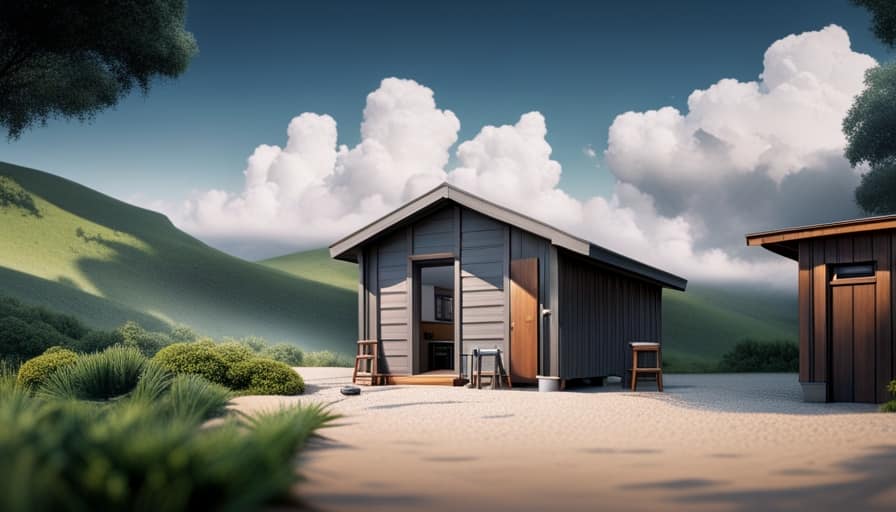
Recently, I have been bothered by these annoying little flies in my home, and I must say, they are really starting to get on my nerves!
But fear not, because I’ve done my research and I’m here to share some expert tips on how to get rid of those tiny flies once and for all.
From identifying the different types of flies to using natural remedies and chemical solutions, I’ve got you covered.
So let’s dive in and bid farewell to these unwanted guests together!
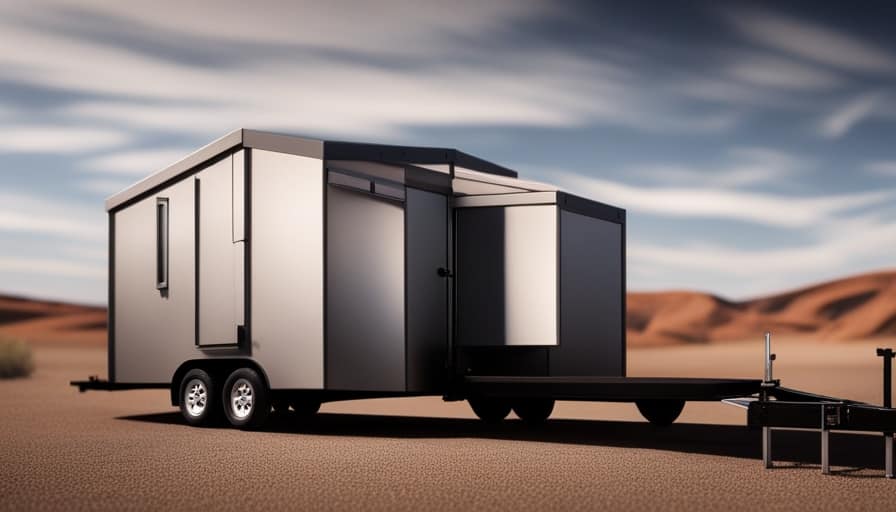
Key Takeaways
- Identifying the common types of tiny flies in your house is important for effective pest control.
- Tiny flies are attracted to moist and decaying organic matter, such as overripe fruits and rotting vegetables.
- Natural remedies, such as vinegar and dish soap solutions, can be used to eliminate tiny flies from your house.
- Preventing future infestations of tiny flies involves maintaining a clean environment, sealing cracks or openings, and storing perishable items properly.
Identifying the Common Types of Tiny Flies in Your House
I can easily identify the common types of tiny flies in my house by observing their physical characteristics and behavior. Flies are attracted to our homes for various reasons, including the presence of food, moisture, and waste. It’s important to note that these flies can pose health risks, as they can carry and spread disease-causing organisms.
To identify the types of flies, I first look at their size and color. For instance, fruit flies are small and have a tan or brown color. Drain flies, on the other hand, are gray or black and have a fuzzy appearance.
Understanding the Reasons Why Tiny Flies Infest Your Home
To understand why tiny flies infest your home, it’s important to consider their attraction to certain conditions and factors within your living space.
These flies, commonly known as fruit flies or drain flies, are attracted to moist and decaying organic matter. They seek out common breeding grounds such as overripe fruits, rotting vegetables, and damp areas in your kitchen or bathroom.
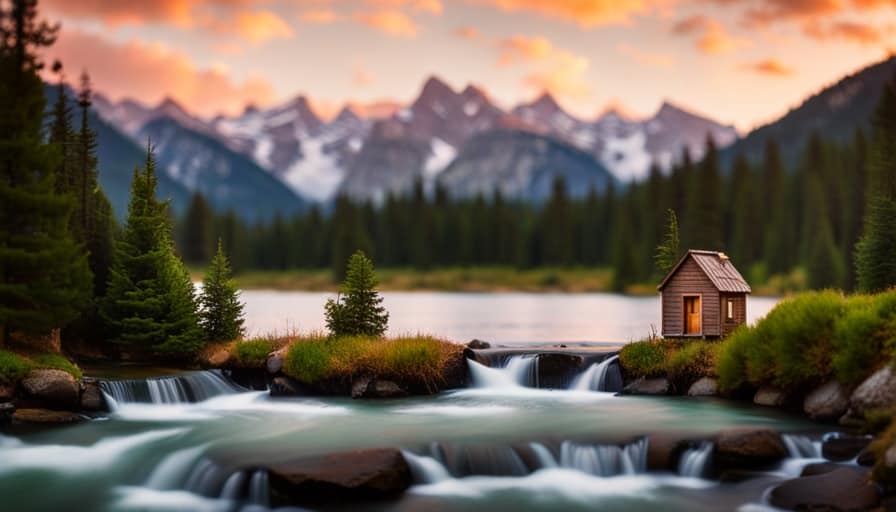
These tiny flies are also drawn to standing water in sinks, drains, and garbage disposals. Signs of a fly infestation include the presence of numerous flies hovering around these areas, as well as the sighting of their larvae or pupae.
It’s crucial to address these conditions and remove any potential breeding grounds to effectively eliminate the infestation and prevent future occurrences.
Natural Remedies to Eliminate Tiny Flies From Your House
One effective way to eliminate tiny flies from your house is by using a combination of vinegar and dish soap. This homemade vinegar fly spray is a non-toxic and practical solution to get rid of those pesky insects.
Here’s how you can make it:
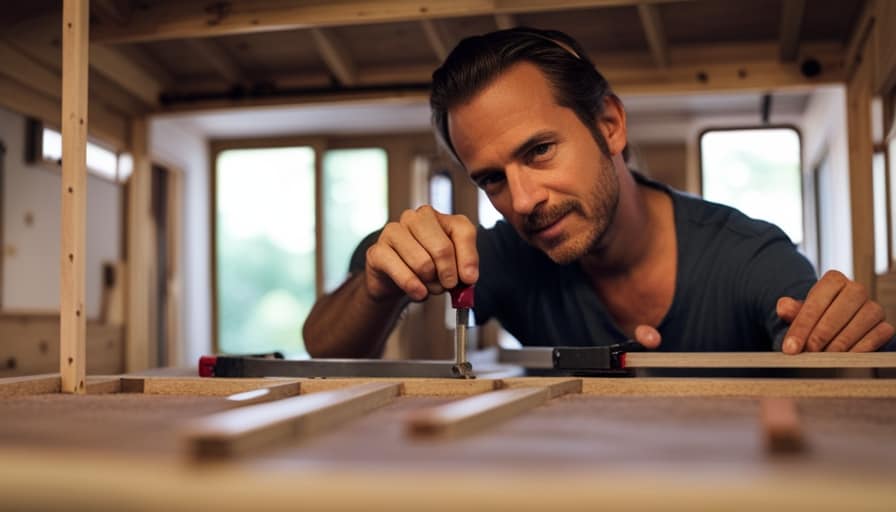
- Mix equal parts of vinegar and water in a spray bottle.
- Add a few drops of dish soap to the mixture. The soap helps to break the surface tension of the liquid, making it easier for the flies to drown.
- Shake the bottle gently to ensure the ingredients are well combined.
- Spray the solution directly onto the flies or in areas where they’re commonly found, such as near windows or fruit bowls.
This natural fly spray isn’t only effective but also safe for your family and pets. It traps and kills the flies without the use of harmful chemicals.
Give it a try and say goodbye to those tiny flies in your house!
Using Chemical Solutions to Get Rid of Tiny Flies in Your Home
Bleach is a strong and effective chemical solution that can help eliminate tiny flies in your home. Chemical solutions, such as bleach, can be highly effective in eliminating tiny flies. The strong properties of bleach make it a powerful tool for killing flies and destroying their breeding grounds. However, it’s important to use caution when using chemical solutions, as they can be harmful to humans and pets if not used properly.
When comparing chemical solutions to natural remedies for getting rid of tiny flies in your house, it’s important to consider their effectiveness.
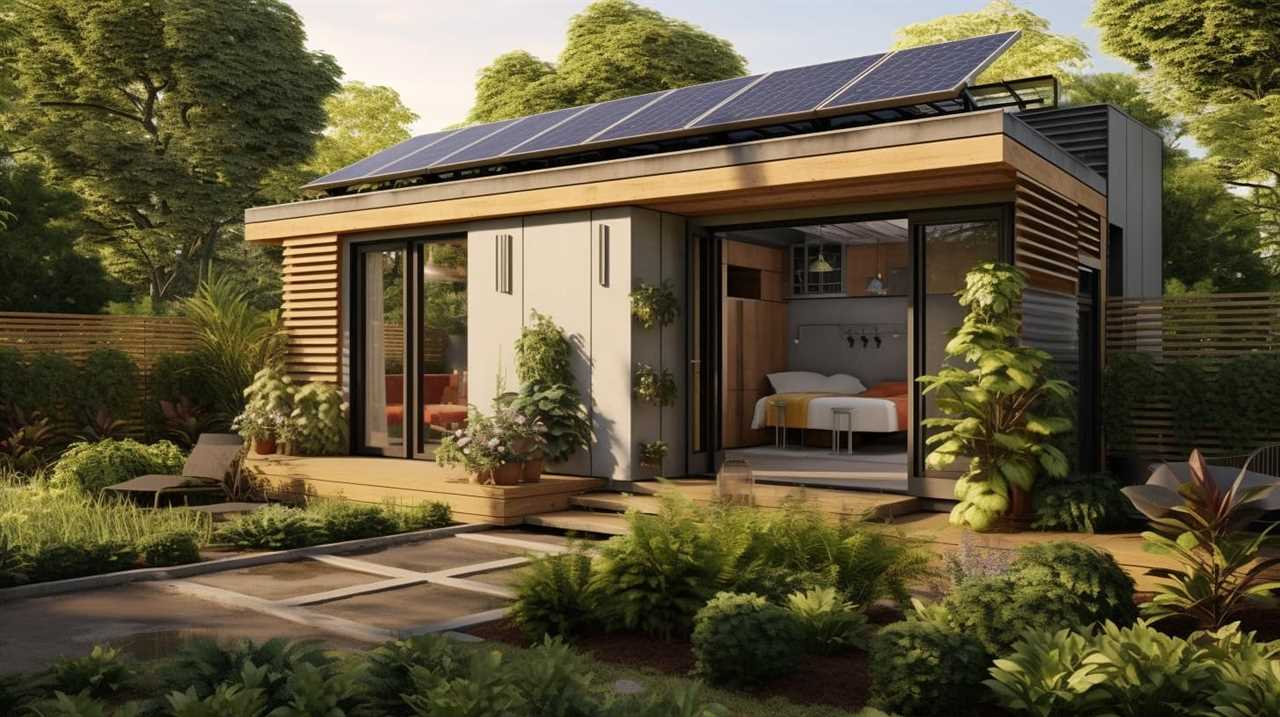
In the next section, we’ll discuss methods for preventing future infestations of tiny flies in your house.
Preventing Future Infestations of Tiny Flies in Your House
I can take steps to prevent future infestations of tiny flies in my house by implementing proper sanitation practices. By maintaining a clean environment, I can greatly reduce the chances of reinfestation. Here are three key practices to incorporate:
-
Regularly clean and sanitize all areas of the house, especially the kitchen and garbage disposal areas. Empty and clean trash cans frequently to prevent any organic matter from attracting flies.
-
Seal any cracks or openings in doors, windows, and screens to prevent flies from entering the house. Repair any damaged screens to ensure they’re intact and functioning properly.
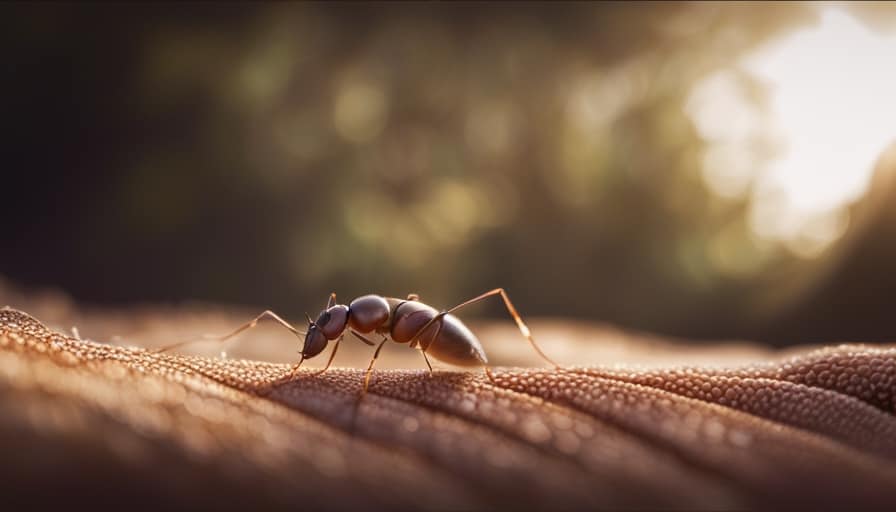
-
Store fruits, vegetables, and other perishable items in sealed containers or in the refrigerator. Flies are attracted to the odors of decaying food, so keeping it properly stored will deter them.
Frequently Asked Questions
How Do Tiny Flies Affect My Health?
Tiny flies can pose health risks, as they can carry bacteria and pathogens that can cause illnesses. To avoid health issues, it’s important to keep your house clean, dispose of trash properly, and eliminate any standing water where they can breed.
Can Tiny Flies Damage My Property?
Tiny flies can indeed cause damage to your property. Their larvae can infest and feed on organic materials, such as wood, causing structural damage over time. It’s important to address the issue promptly to prevent further harm.
Are Tiny Flies Attracted to Specific Food Sources?
Tiny flies are often attracted to specific food sources, such as overripe fruits or decaying organic matter. Understanding their breeding habits and implementing effective prevention methods, like proper sanitation and sealing entry points, can help keep them out of the house.
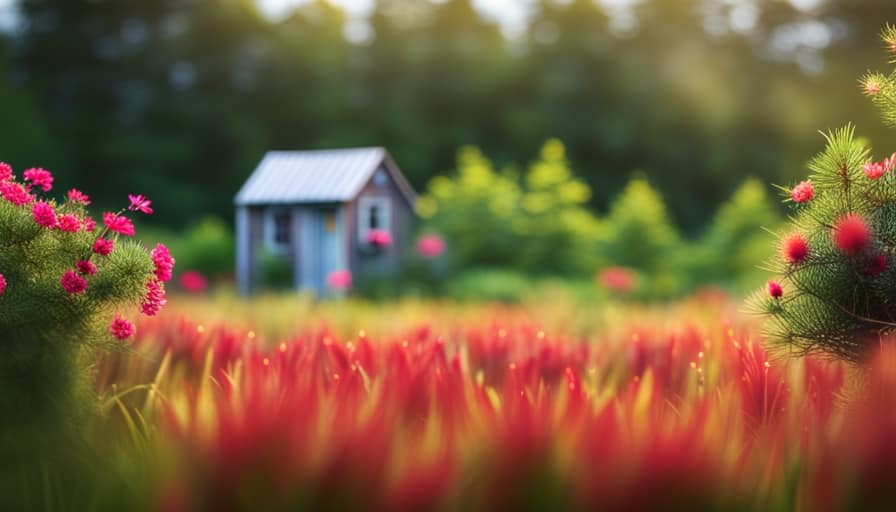
How Long Does It Take for Natural Remedies to Eliminate Tiny Flies?
In my experience, the speed of effectiveness of natural remedies versus chemical solutions for eliminating tiny flies can vary. While some natural remedies may work quickly, others may take longer to fully eliminate the flies. It’s important to be patient and consistent in your efforts.
Are There Any Long-Term Effects of Using Chemical Solutions to Get Rid of Tiny Flies?
Using chemical solutions to eliminate tiny flies in your house can have long-term environmental impacts. Consider using alternative methods like natural remedies or traps that are safer and more sustainable for the ecosystem.
Conclusion
In conclusion, it’s evident that tiny flies can be a nuisance in our homes. By understanding their types and reasons for infestation, we can effectively eliminate them using natural remedies or chemical solutions.
However, it’s crucial to prevent future infestations by maintaining cleanliness and proper waste management. Rest assured, with the right knowledge and approach, you can bid farewell to these pesky insects and enjoy a fly-free home environment.
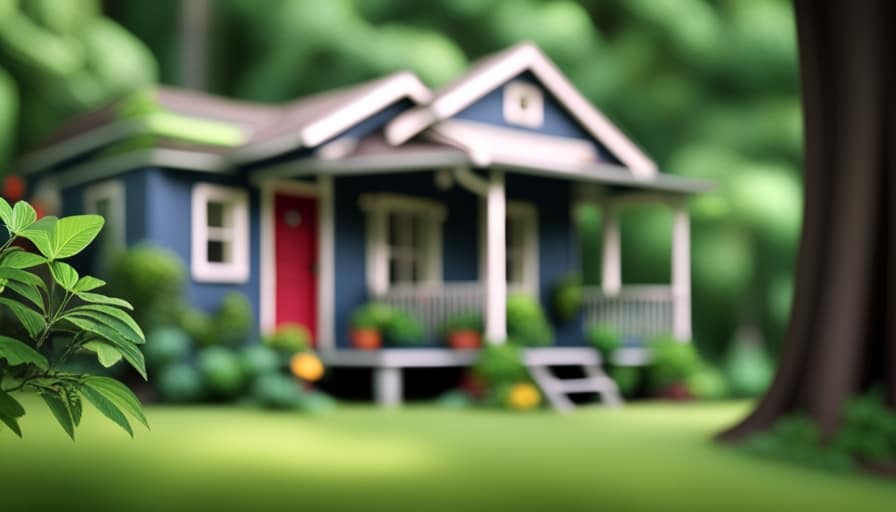
I’m Theodore, and I love tiny houses. In fact, I’m the author of Tiny House 43, a book about tiny houses that are also tree houses. I think they’re magical places where imaginations can run wild and adventures are just waiting to happen.
While tree houses are often associated with childhood, they can be the perfect adult retreat. They offer a cozy space to relax and unwind, surrounded by nature. And since they’re typically built on stilts or raised platforms, they offer stunning views that traditional homes simply can’t match.
If you’re looking for a unique and romantic getaway, a tree house tiny house might just be the perfect option.
Beginners Guides
How Do I Get Rid of Tiny Ants in My House

- Health risks: Are there any potential diseases that can be transmitted by ants in the house?
- Prevention methods: What are some effective ways to keep ants out of the house to avoid any health risks?
I have been dealing with these stubborn small ants in my home, and I’m sure you can empathize. It seems like I am stuck in an endless game of hide-and-seek with these little creatures.
But fear not, because I’ve done my research and I’m here to share some tried and true methods to get rid of them for good. From natural remedies to chemical solutions, I’ve got you covered.
So let’s roll up our sleeves and say goodbye to those pesky ants together!
Key Takeaways
- Identifying the type of ants in your house is important in order to effectively address the infestation issue.
- Understanding the behavior and nesting habits of tiny ants is essential in finding and eliminating their colonies.
- Natural remedies such as vinegar and water solution, essential oils, and cinnamon can help repel and eliminate tiny ants.
- If natural remedies don’t work, consider using chemical solutions or seeking professional pest control services for a safer and more comprehensive approach.
Identifying the Type of Ants in Your House
I personally find it helpful to identify the type of ants in my house by observing their behavior and physical features. Distinguishing characteristics play a crucial role in determining the species of ants present.

Some common types of household ants include pavement ants, odorous house ants, and pharaoh ants. Pavement ants are dark brown or black with parallel grooves on their heads and thoraxes. Odorous house ants emit a distinct odor when crushed, often described as a rotten coconut smell. Pharaoh ants are light yellow to reddish-brown and have two distinct nodes on their petioles.
In terms of common habitats, ants can be found in various areas of the house, including kitchens, bathrooms, and around food sources. Understanding the behavior and nesting habits of tiny ants is essential in effectively addressing the infestation issue.
Understanding the Behavior and Nesting Habits of Tiny Ants
There are several key factors to consider when understanding the behavior and nesting habits of tiny ants in your house.
These tiny creatures are social insects, living in colonies that can range from a few dozen to thousands of individuals. They communicate and cooperate through chemical signals and pheromones, which helps them locate food sources and establish trails.

When it comes to nesting, tiny ants can build their colonies in various locations, such as in wall voids, under floors, or even in potted plants. Understanding their nesting habits is crucial in effectively eliminating them from your house.
It’s important to note that while ants can be a nuisance indoors, they play a vital role in the ecosystem, helping to decompose organic matter and control other insect populations. However, their presence in food storage areas can contaminate and spoil food, making it necessary to address their infestation promptly and safely.
Natural Remedies to Get Rid of Tiny Ants in Your House
One effective natural remedy to eliminate tiny ants in your house is using a vinegar and water solution. Vinegar, with its strong odor, disrupts their scent trails and confuses them, making it difficult for them to navigate. To create the solution, mix equal parts of white vinegar and water in a spray bottle. Then, simply spray the solution directly onto the ants or their entry points.
Another natural remedy is using essential oils, such as peppermint, lemon, or tea tree oil. These oils have strong scents that repel ants. Mix a few drops of your chosen essential oil with water and spray it in areas where ants are present.
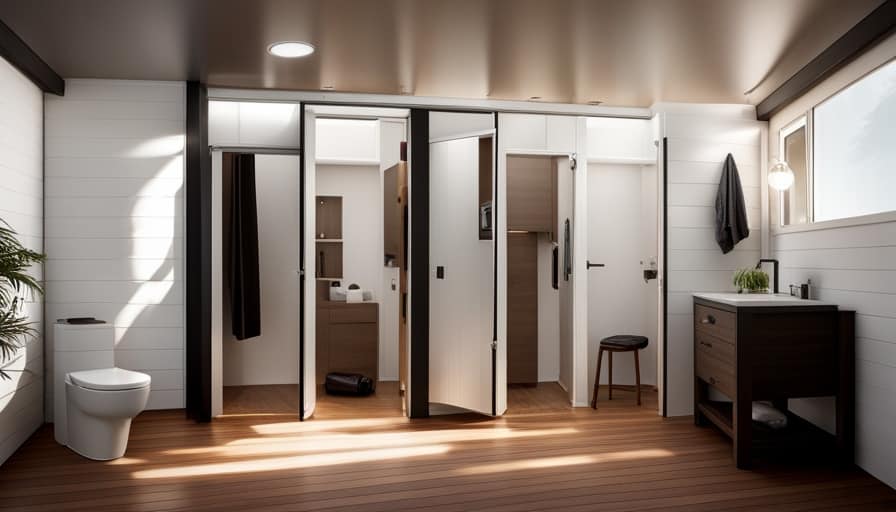
These natural remedies provide an eco-friendly and safe way to get rid of tiny ants in your house. However, if these methods don’t work, it may be necessary to consider chemical solutions for eliminating tiny ants.
Chemical Solutions for Eliminating Tiny Ants
If you’re dealing with a persistent infestation of tiny ants in your house, using insecticide sprays can be an effective solution to eliminate them. However, it is important to consider non-toxic alternatives and professional pest control services for a safer and more comprehensive approach.
| Chemical Solution | How it Works | Pros | Cons |
|---|---|---|---|
| Insecticide sprays | Kills ants on contact | – Easy to use – Widely available – Immediate results |
– Chemical exposure – Harmful to pets and children – Potential environmental impact |
While insecticide sprays can quickly kill ants, they may pose risks to your health and the environment. If you prefer non-toxic alternatives, consider using natural repellents like vinegar, lemon juice, or essential oils. These substances are less harmful and can help deter ants from entering your home.
Another option is to hire professional pest control services. They have the expertise and specialized equipment to effectively eliminate ant infestations. Professionals can also assess the extent of the problem and provide long-term solutions to prevent future infestations.
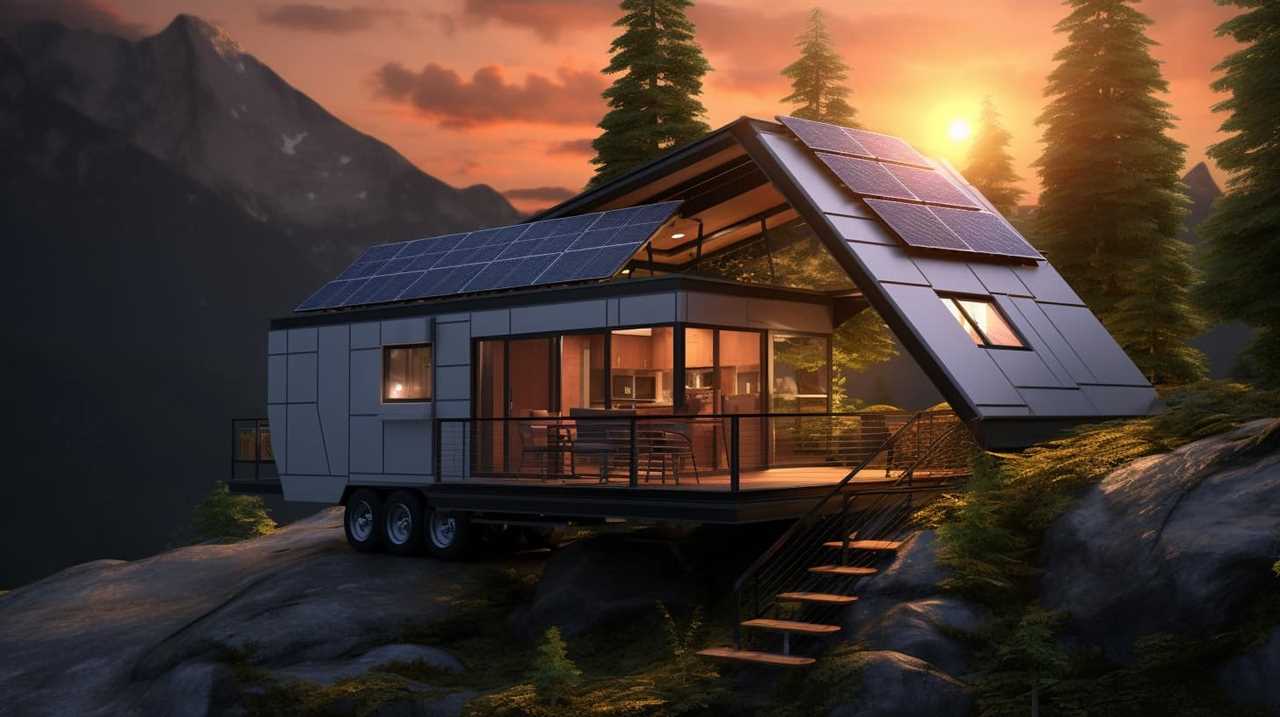
Preventing Future Infestations: Tips and Tricks
When I encountered a persistent infestation of tiny ants in my house, I took proactive steps to prevent future infestations. Here are some effective ant proofing techniques for your home and long-term strategies for keeping ants out:
-
Seal cracks and crevices: Inspect your house for any openings where ants can enter, such as gaps around doors, windows, and pipes. Use caulk or weatherstripping to seal these entry points.
-
Keep your house clean: Clean up food and drink spills promptly, and store food in airtight containers. Wipe down countertops and sweep floors regularly to remove any crumbs or residue that may attract ants.
-
Remove potential ant habitats: Trim back vegetation that’s in contact with your house, as ants can use it as a bridge to enter. Also, keep firewood and other outdoor items away from the foundation.
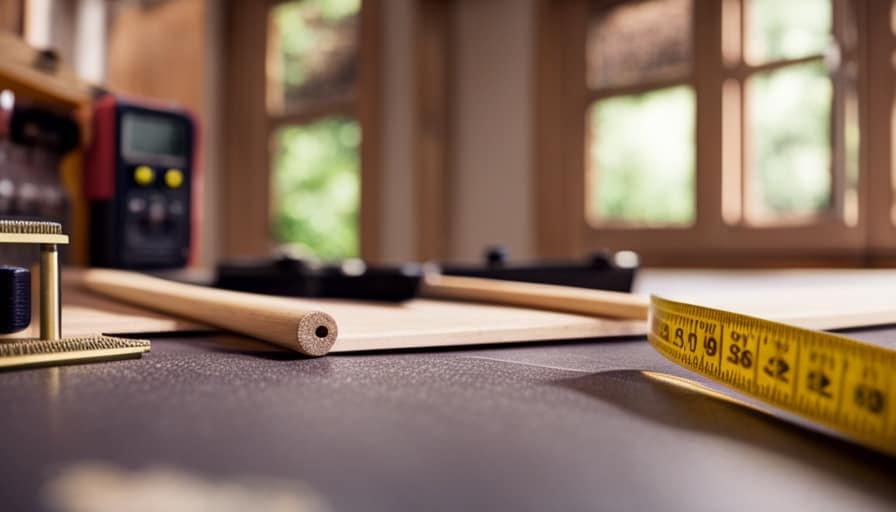
-
Use natural deterrents: Certain scents like peppermint, cinnamon, and vinegar can repel ants. Spray these substances around entry points or wipe down surfaces to discourage ants from entering.
Frequently Asked Questions
How Do I Get Rid of Ants in My Garden?
To get rid of ants in my garden, I use organic pest control methods and natural ant repellents. These methods are effective in keeping ants away and maintaining a healthy garden environment.
Can I Use Vinegar to Kill Ants?
Yes, vinegar can be used to kill ants. However, there are also other natural ant repellents that you can consider using as alternatives to vinegar.
What Should I Do if I Have a Severe Ant Infestation?
If I have a severe ant infestation, I would first focus on prevention tips such as sealing entry points and removing food sources. If the problem persists, I would consider professional ant extermination options for effective and long-lasting results.

Are There Any Health Risks Associated With Ants in the House?
There are potential health risks associated with ants in the house. They can contaminate food, spread bacteria, and even cause allergies. It’s important to take preventive measures to avoid these risks.
Can I Use Essential Oils to Repel Ants?
I find that using essential oils for ant control can be effective. However, it’s important to consider the pros and cons of natural ant repellents. While they are safe and eco-friendly, they may not be as potent as chemical options.
Conclusion
In conclusion, by identifying the type of ants in your house, understanding their behaviors and nesting habits, and implementing natural or chemical remedies, you can effectively get rid of tiny ants.
However, prevention is key to avoiding future infestations. Just as a fortress protects its kingdom from invaders, taking proactive measures will safeguard your home from these pesky pests.
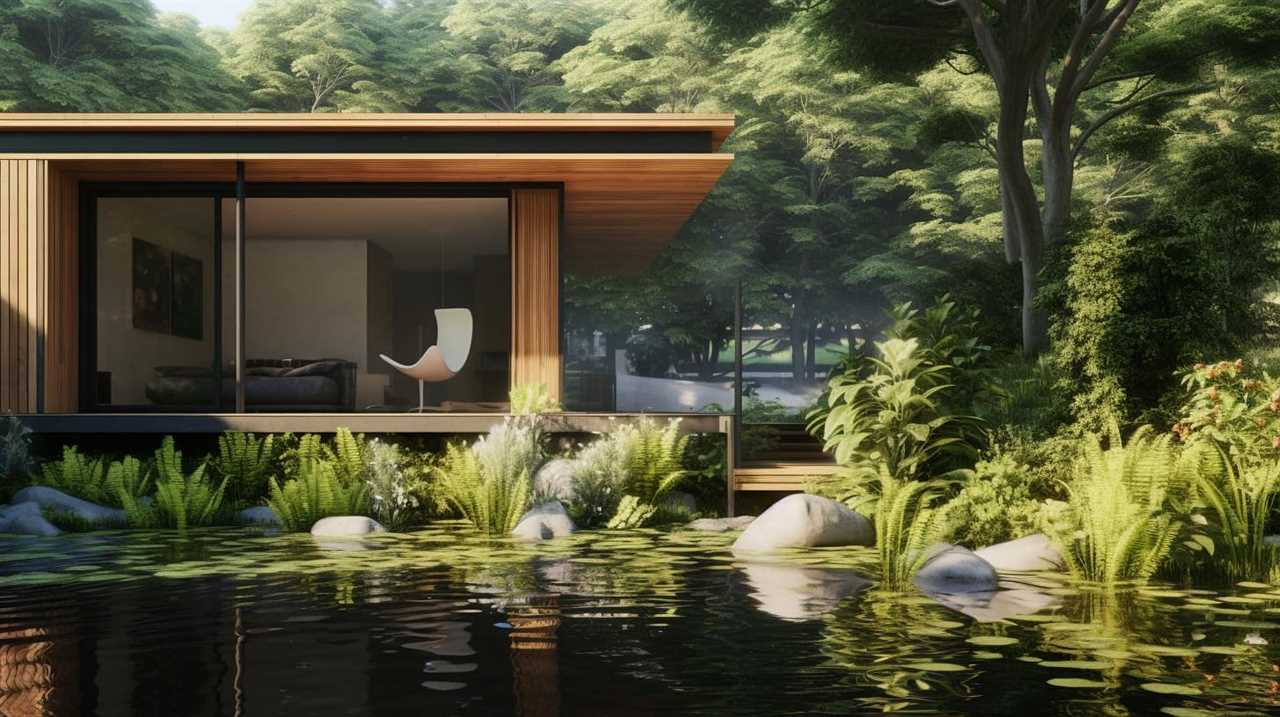
Stay vigilant and maintain cleanliness to ensure a ant-free environment.
I’m Theodore, and I love tiny houses. In fact, I’m the author of Tiny House 43, a book about tiny houses that are also tree houses. I think they’re magical places where imaginations can run wild and adventures are just waiting to happen.
While tree houses are often associated with childhood, they can be the perfect adult retreat. They offer a cozy space to relax and unwind, surrounded by nature. And since they’re typically built on stilts or raised platforms, they offer stunning views that traditional homes simply can’t match.
If you’re looking for a unique and romantic getaway, a tree house tiny house might just be the perfect option.
Beginners Guides
How Cheap Can You Build a Tiny House

Constructing a small house is akin to figuring out a puzzle – it can be difficult, but the payoff is valuable. As someone who enjoys discovering inventive answers, I sympathize with the longing to create a gorgeous home without breaking the bank.
In this article, we’ll explore the factors that affect the cost of building a tiny house and discover budget-friendly materials and labor-saving strategies. Join me on this journey to uncover just how cheap you can build your dream tiny house.
Key Takeaways
- Choosing the right location in a rural area with lower land prices and fewer building restrictions can significantly affect the cost of building a tiny house.
- Using alternative building methods such as reclaimed materials or repurposed items can help reduce costs.
- Implementing cost-saving techniques and building on a budget are important factors in building a cheap tiny house.
- Utilizing budget-friendly building materials, such as affordable insulation options and low-cost flooring alternatives, can also contribute to building a cheap tiny house.
Factors Affecting the Cost of Building a Tiny House
What are the factors that affect the cost of building a tiny house?
When it comes to building a tiny house on a budget, there are several cost-saving techniques and alternative building methods that can significantly impact the overall cost.

One of the main cost-saving techniques is choosing the right location. Building in a rural area with lower land prices and fewer building restrictions can help keep costs down.
Another factor that affects the cost is the size and design of the tiny house. The simpler the design, the more cost-effective it will be.
Additionally, using alternative building methods such as reclaimed materials or repurposed items can also help reduce costs.
By considering these factors and implementing cost-saving techniques, it’s possible to build a tiny house on a budget.
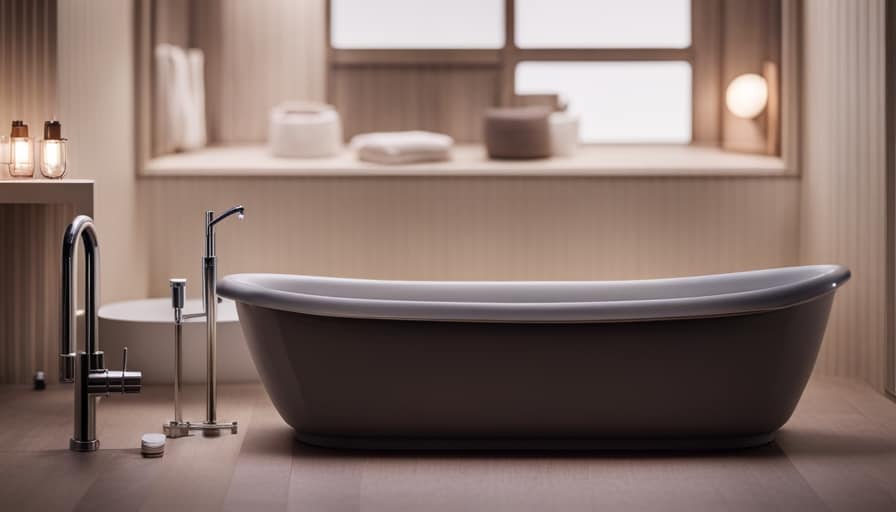
Transitioning into the subsequent section about budget-friendly tiny house building materials, let’s explore how the choice of materials can further impact the overall cost.
Budget-Friendly Tiny House Building Materials
When it comes to building a tiny house on a budget, I can find affordable building materials that will help keep costs down. One area where I can save money is by choosing affordable insulation options. Instead of expensive spray foam insulation, I can opt for alternatives such as fiberglass batts or rigid foam boards. These options are cost-effective and still provide good insulation for the tiny house. Additionally, I can consider low-cost flooring alternatives to save money. Instead of hardwood or tile, I can use vinyl plank flooring or laminate flooring, which are both affordable and durable. By making smart choices when it comes to insulation and flooring, I can build a budget-friendly tiny house without compromising on quality.
| Affordable Insulation Options | Low Cost Flooring Alternatives |
|---|---|
| Fiberglass batts | Vinyl plank flooring |
| Rigid foam boards | Laminate flooring |
Strategies for Saving Money on Tiny House Design
To save money on my tiny house design, I can employ cost-saving strategies such as utilizing multipurpose furniture and maximizing storage space. By incorporating cost-effective design options and implementing DIY tiny house building techniques, I can create a functional and affordable living space.
One key strategy is to choose furniture that serves multiple purposes, such as a sofa that can be converted into a bed or a dining table that can be folded away when not in use. This not only saves money on buying separate pieces of furniture but also maximizes the use of limited space.
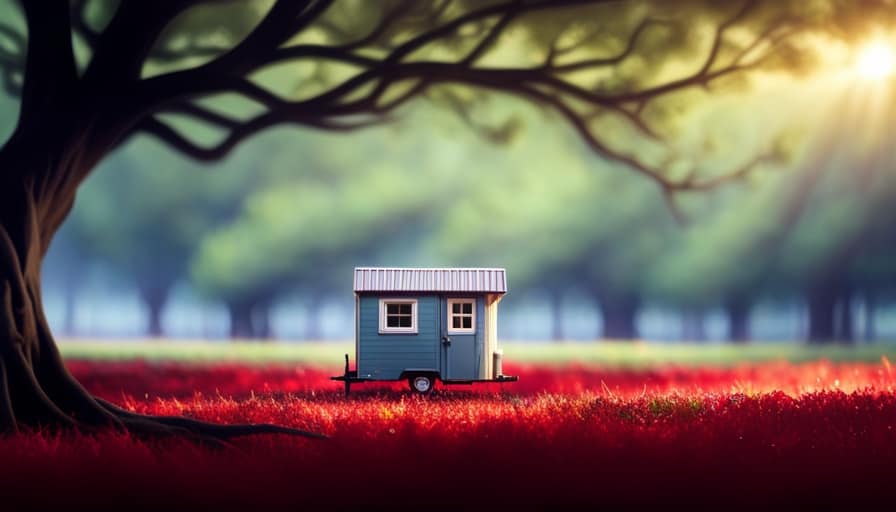
Another cost-saving strategy is to maximize storage space by utilizing built-in shelving, under-bed storage, and wall-mounted organizers. This eliminates the need for additional storage furniture and keeps the space clutter-free.
Creative Ways to Reduce Labor Costs in Tiny House Construction
I can significantly reduce labor costs in tiny house construction by hiring a small team of skilled workers instead of a large crew. This approach allows for effective coordination and streamlined communication, resulting in increased efficiency and reduced labor hours.
Here are some creative ways to further reduce labor costs in tiny house construction:
-
Utilize DIY construction techniques: Encourage the use of DIY construction techniques, where homeowners can actively participate in the building process. This not only reduces labor costs but also creates a sense of ownership and satisfaction.
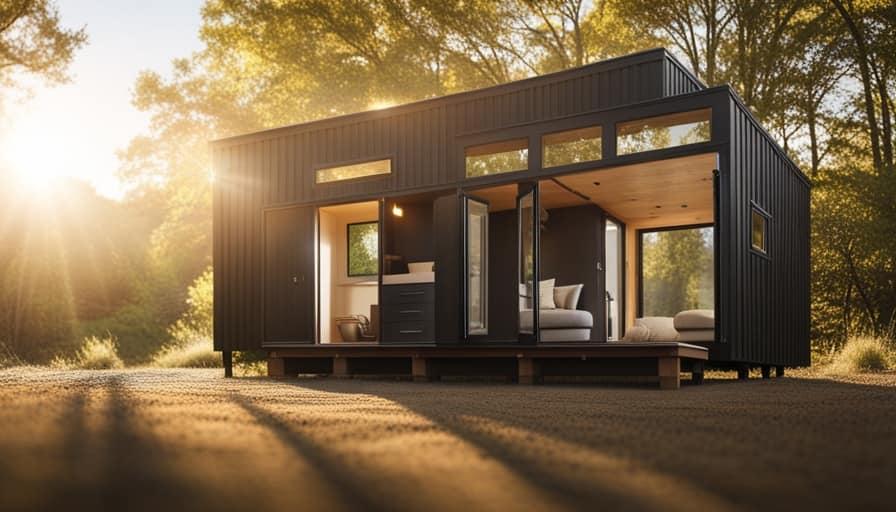
-
Incorporate alternative energy sources: Explore the use of alternative energy sources such as solar panels or wind turbines. By integrating these systems during the construction phase, you can avoid additional labor costs associated with retrofitting.
-
Optimize material usage: Carefully plan and optimize the use of materials to minimize waste. This can be achieved by accurately measuring and cutting materials, as well as repurposing leftover materials for other parts of the project.
-
Prioritize efficient design: Focus on designing a space that maximizes functionality and minimizes unnecessary labor-intensive features. This includes thoughtful space planning, utilizing multipurpose furniture, and incorporating efficient storage solutions.
Implementing these strategies won’t only help reduce labor costs but also contribute to a sustainable and budget-friendly tiny house construction process.
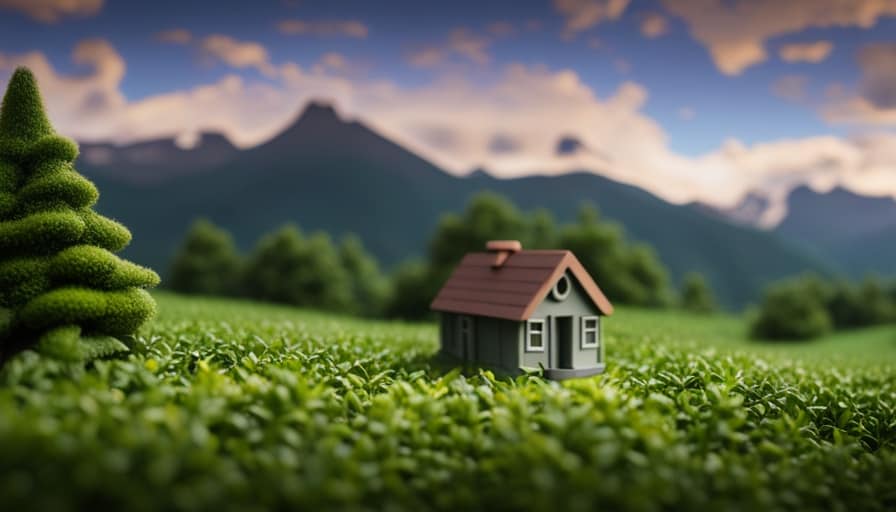
Tips for Finding Affordable Land for Your Tiny House
By researching online listings and networking with local real estate agents, I can easily find affordable land for my tiny house. It is important to explore alternative financing options for purchasing land for a tiny house to keep costs low. One option is owner financing, where the seller acts as the lender and allows you to make monthly payments instead of obtaining a traditional mortgage. Another option is crowdfunding, where you can raise funds from a community of supporters who believe in your tiny house project. Additionally, negotiating with local municipalities for reduced fees and regulations for tiny house living can save you money in the long run. Some municipalities may be open to creating special zoning or permitting regulations for tiny houses, making it easier and more affordable to live in them.
| Financing Options | Benefits |
|---|---|
| Owner Financing | Lower interest rates, flexible payment terms |
| Crowdfunding | Community support, no need for traditional loans |
| Negotiating with Local Municipalities | Reduced fees, simplified regulations |
Finding affordable land for your tiny house is a crucial step in building your dream home while staying within your budget. With the right research, networking, and negotiation skills, you can make your tiny house dreams a reality.
Frequently Asked Questions
What Are the Most Common Mistakes to Avoid When Building a Tiny House on a Tight Budget?
Common pitfalls to avoid when building a tiny house on a tight budget include overestimating DIY skills, not researching local codes and regulations, and not budgeting for unexpected expenses. Cost saving tips include using reclaimed materials and prioritizing essential features.
Are There Any Financing Options Available for Building a Tiny House?
Financing options for building a tiny house include personal loans, RV loans, and construction loans. Pros include flexibility, ownership, and the opportunity to live mortgage-free. Cons may include higher interest rates and stricter qualification requirements.
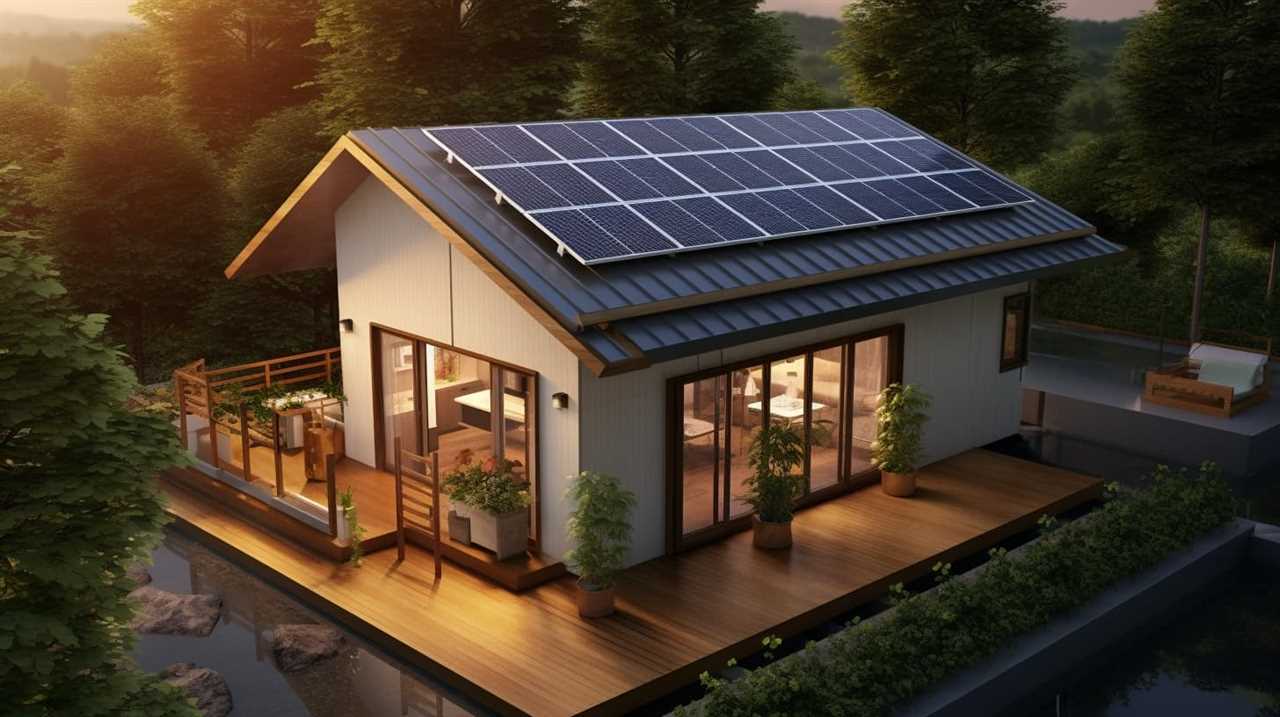
How Much Does It Cost to Maintain a Tiny House on a Yearly Basis?
Maintaining a tiny house on a yearly basis can be cost-effective. By embracing the benefits of living in a tiny house vs. a traditional home and following tips for minimizing maintenance costs, I can save money and enjoy a simpler lifestyle.
Can You Build a Tiny House Using Recycled or Salvaged Materials?
Using recycled and salvaged materials for a tiny house not only saves money, but also gives a sense of purpose and accomplishment. It’s a creative way to build sustainably and reduce waste while creating a unique and personalized home.
Are There Any Legal Restrictions or Regulations to Consider When Finding Land for a Tiny House?
When finding land for a tiny house, it’s important to consider legal restrictions and zoning regulations. Land requirements vary, and financing options may be limited. Maintenance costs can be lower, and eco-friendly building materials are often used.
Conclusion
In conclusion, building a tiny house can be an affordable and cost-effective option for those looking to downsize or live a more minimalist lifestyle. By considering factors such as materials, design strategies, and labor costs, it’s possible to build a tiny house on a tight budget.
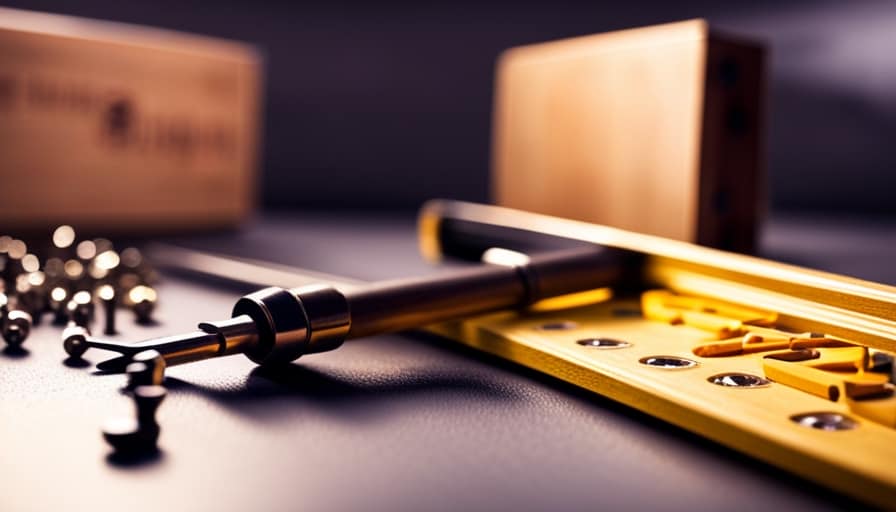
With a little creativity and resourcefulness, you can achieve your dream of owning a tiny house without breaking the bank. So why wait? Start planning and building your own tiny house today!
I’m Theodore, and I love tiny houses. In fact, I’m the author of Tiny House 43, a book about tiny houses that are also tree houses. I think they’re magical places where imaginations can run wild and adventures are just waiting to happen.
While tree houses are often associated with childhood, they can be the perfect adult retreat. They offer a cozy space to relax and unwind, surrounded by nature. And since they’re typically built on stilts or raised platforms, they offer stunning views that traditional homes simply can’t match.
If you’re looking for a unique and romantic getaway, a tree house tiny house might just be the perfect option.
-

 Beginners Guides2 weeks ago
Beginners Guides2 weeks agoHow To Buy A Tesla Tiny House
-

 Energy Efficiency2 months ago
Energy Efficiency2 months agoBest Tiny Homes For Cold Climates
-

 Beginners Guides2 weeks ago
Beginners Guides2 weeks agoTiny House Nation Where Are They Now Stephanie
-

 Tiny House Resources (e.g., legalities, cost, insurance, FAQs)2 months ago
Tiny House Resources (e.g., legalities, cost, insurance, FAQs)2 months agoDo Tiny Homes Need Planning Permission?
-

 Beginners Guides3 weeks ago
Beginners Guides3 weeks agoFrom The Show Tiny House Nation How Many Keep Their Tiny House?
-

 Beginners Guides2 months ago
Beginners Guides2 months agoUsing a Climbing Net For Treehouse Construction
-

 Beginners Guides2 months ago
Beginners Guides2 months agoHow to Build a Treehouse Without Drilling Into the Tree
-

 Beginners Guides3 weeks ago
Beginners Guides3 weeks agoTiny House Nation Who Pays For The Houses







